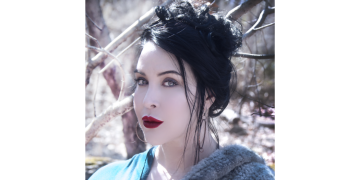In their lust for riches, the miners of the gold rush moved a gargantuan amount of dirt. A prominent geologist, Grove Karl Gilbert, calculated in the early 1900s that miners in the Sierra Nevada had displaced eight times the amount of dirt and detritus that was moved to build the Panama Canal.
Most of what those miners displaced was broken loose from the landscape by spraying hillsides with powerful water cannons. The human-made mudslides that resulted were directed through troughs known as sluices, which had grooves to catch flakes and nuggets of gold.
This seminal chapter in California’s history came up a number of times during two trips I took to Gold Country in recent weeks. Fortune seekers, geologists and amateur prospectors compared the past winter’s deluges to the water cannons of yore.
The chain of atmospheric rivers that Californians endured had many consequences: It filled reservoirs, flooded valleys, spurred a super bloom of wildflowers, and extended the ski season into summer.
And, as it turns out, the rain brought a measure of gold fever back to the foothills of the Sierra. In an article published over the weekend, I explored the small but dedicated corps of fortune seekers who said they had seen conditions like this only a few other times in their lives.
Bill Mitchell, a geologist in El Dorado County who specializes in mineral exploration, said a majority of the gold in the Sierra had still not been extracted. It’s going to take rainy years like this one to pry some of the remaining gold loose, he said.
The fortune seekers of the Sierra are donning wet suits and “sniping” for gold — probing creek bottoms with snorkels and masks. And they are walking the riverbanks with metal detectors.
Right now, the rivers are running hard. Ed Allen, the historian at the Marshall Gold Discovery State Historic Park in Coloma, said the flow of the American River was clocked this winter at 25 miles an hour. The river has slowed somewhat since then, but white-water rafters are still zinging by as if they were propelled by some hidden motor.
The real pay dirt is likely to reveal itself when the rushing waters swollen with snow melt subside. Prospectors are counting on a busy summer, when they can peer behind boulders and dig into crevices — the places where the heavy chunks of gold deposit themselves.
“A river is really a giant sluice box,” said Barron Brandon, a former mining executive who pans for gold in his spare time and has found enough pieces to fill a finger-size glass vial.
Mitchell, the geologist, doesn’t do much sniping or panning these days. But when he was younger, he dated a woman who told him she would marry him if he could find enough gold in the ground to make two rings.
“That provided a bit of motivation,” he said. “Two weeks later I had enough gold.”
The couple will soon celebrate three decades of marriage.
What you get
For $1.1 million: A two-bedroom bungalow in Oakland, a midcentury-modern-inspired home in Palm Springs or a 1918 Craftsman house in Oxnard.
Where we’re traveling
Today’s tip comes from Donna Giddens, who lives in Elk Grove:
“My husband and I love the beauty and serenity of walking the trails in the Fiscalini Ranch Preserve in Cambria, when the morning fog has burned off and the sun illuminates the glorious Pacific and all the flora and fauna that the Central Coast has to offer.”
Tell us about your favorite places to visit in California. Email your suggestions to CAtoday@nytimes.com. We’ll be sharing more in upcoming editions of the newsletter.
Tell us
After a rainy winter, spring has arrived in California. Tell us your favorite part of the season, whether it’s road trips, festivals, sunny afternoons or wildflower sightings.
Email us at CAToday@nytimes.com, and please include your name and the city where you live.
And before you go, some good news
A man from Huntington Beach recently set a Guinness World Record for most consecutive visits to Disneyland — 2,995 straight days, or more than eight years.
The man, Jeff Reitz, who lives 30 minutes from the Anaheim park, began his journey in January 2012 and stopped going only when the park shut down in March 2020 because of the pandemic.
Visiting Disneyland each day was a way to exercise and meet new people, and it became a constant source of joy, he told NPR: “It was my gym. It was my happy hour. It was entertainment, all in one package.”
Thanks for reading. We’ll be back tomorrow.
P.S. Here’s today’s Mini Crossword.
Soumya Karlamangla, Briana Scalia and Bernard Mokam contributed to California Today. You can reach the team at CAtoday@nytimes.com.

























